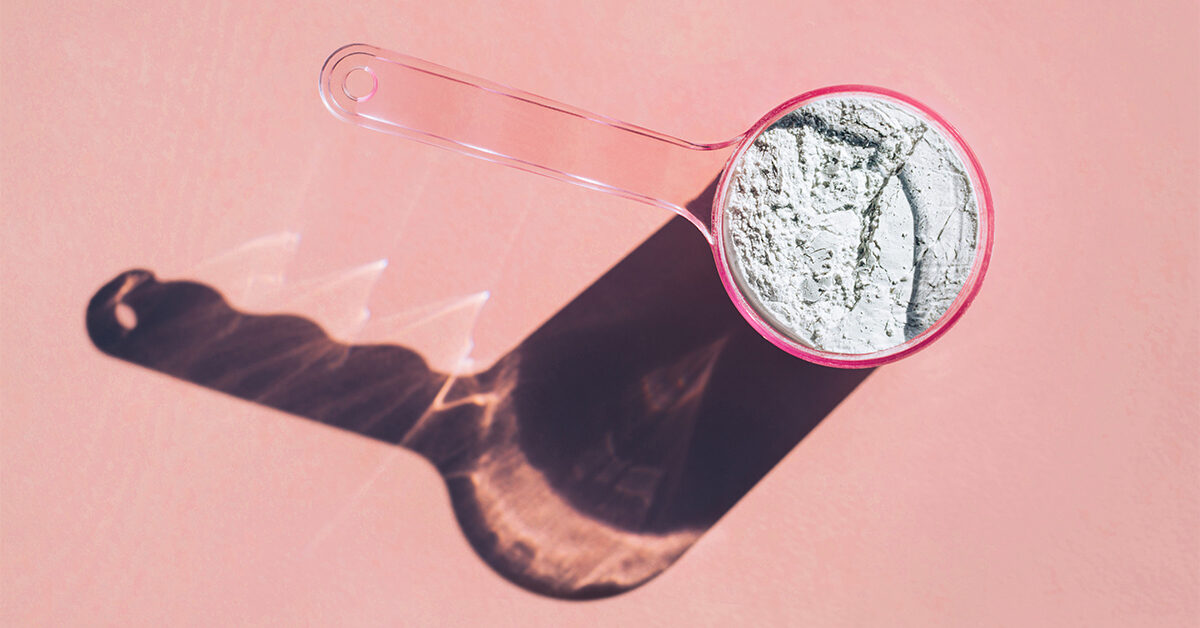- May 11, 2022
- No Comment
- 14 minutes read
What Is Grass-Fed Collagen? Benefits, Downsides, and Uses – Healthline

Collagen is the most abundant protein in your body, responsible for structure, stability, and strength. It supports numerous tissues, including your tendons and ligaments, as well as your skin and teeth (1).
While your body produces this protein on its own, its production declines with age. However, you can obtain dietary collagen from animal sources, including grass-fed cattle (1).
This article examines the benefits, drawbacks, and uses of grass-fed collagen.
Supplemental collagen can be derived from multiple animal sources, such as bovine, porcine, and marine organisms. Bovines are a group of 10 genera that includes cattle, bison, African buffalo, water buffalo, and antelopes (1).
Grass-fed collagen specifically refers to collagen obtained from the bones of grass-fed cattle.
Grass feeding means that the animals must have been fed only grass or forage — except for milk consumed before weaning — and have had continuous access to pasture during the growing season until slaughter (2).
When cattle are forage-fed, it means that they’re allowed to wander in search of food, such as grass or hay.
Thus, this product cannot be derived from grain-fed or feedlot-farmed cattle.
Grass-fed collagen is obtained strictly from the bones of grass-fed cattle.
The health benefits of grass-fed collagen are the same as bovine collagen.
Human and animal studies show that bovine collagen may help prevent bone loss, reduce signs of skin aging, and improve joint health (3, 4, 5).
Nevertheless, grass-fed collagen may be more ethically sound, supporting animal welfare and lowering the likelihood of exposure to chemicals, antibiotics, and hormones.
While a generic grass-fed label is largely unregulated, products certified by the American Grassfed Association (AGA) come solely from animals that were never treated with added antibiotics or hormones (6, 7).
Grass-fed cattle tend to be raised more humanely, as they have fewer space restrictions and can roam freely (8).
In contrast, feedlot cattle have limited space, which contributes to the prevalence of diseases, including mastitis — leading to increased antibiotic use (8).
What’s more, grass-fed cattle operations are more ecologically sustainable. Research shows that they consume less energy than indoor or confined operations and have a lower overall environmental impact (8).
Grass-fed collagen may benefit your bone, skin, and joint health. Opting for grass-fed collagen ensures better animal welfare and environmental effects.
Like regular bovine collagen, the main types of grass-fed collagen supplements are hydrolyzed collagen and gelatin.
Grass-fed hydrolyzed collagen is composed of very small amino acid chains with high solubility — meaning that it easily dissolves in water. In fact, these supplements can be dissolved into hot and cold beverages (9).
In contrast, grass-fed gelatin is derived from the partial breakdown of collagen. While gelatin has a smaller structure than collagen, its amino acid chains are bigger than hydrolyzed collagen, so it only dissolves in hot liquids (10).
Both types are primarily found in powder form, although hydrolyzed collagen capsules are also available.
Grass-fed hydrolyzed collagen is often added to smoothies, coffee, or tea, while gelatin is mainly used to make gummies or thicken desserts and sauces.
Unlike grass-fed collagen, which is derived from cattle, marine collagen typically comes from fish, sharks, or jellyfish (11).
While grass-fed collagen offers mostly type I and III collagen, which most commonly occur in bones, skin, teeth, ligaments, tendons, and blood vessels, marine collagen primarily provides types I and II, which are predominantly found in skin and cartilage (9, 11).
In addition, marine collagen is more easily absorbed than other animal-based collagen, has a minimal risk of transmitting diseases, and a lower inflammatory potential (1, 9, 11).
Moreover, marine collagen is the only pescatarian-friendly alternative and may be preferable for anyone who avoids beef products for religious or personal reasons (9, 11).
The main types of grass-fed collagen supplements are hydrolyzed collagen and gelatin. For anyone who avoids beef or simply wants an alternative, marine collagen is also available.
There are no documented risks or side effects from consuming grass-fed collagen.
However, in rare instances, some people may be allergic to bovine collagen, which may lead to anaphylaxis. This life-threatening allergic reaction causes a sudden narrowing of the airways, making it difficult to breathe (11).
If you develop symptoms of anaphylaxis after ingesting collagen, call 911 immediately.
Still, as health risks are minimal, bovine bone remains one of the most abundant sources of gelatin, accounting for 23% of gelatin production in Europe and the United States (4).
There are no recorded risks of consuming grass-fed collagen. However, some people may be allergic to it.
Unlike regular bovine collagen, grass-fed collagen is obtained solely from grass-fed cattle.
In this case, the cattle must have been fed only grass or forage and had continuous access to pasture.
While the health benefits of grass-fed collagen are likely very similar to regular bovine collagen, this alternative ensures an environmentally friendly product that supports animal welfare.
You may find grass-fed collagen products in capsule and powder form, which you can add to hot and cold drinks alike.
Try this today: This sugar-free, hot chocolate gummies recipe is worth a shot if you’re looking for new ways to use your grass-fed gelatin powder.
Last medically reviewed on May 10, 2022
OUR BRANDS

